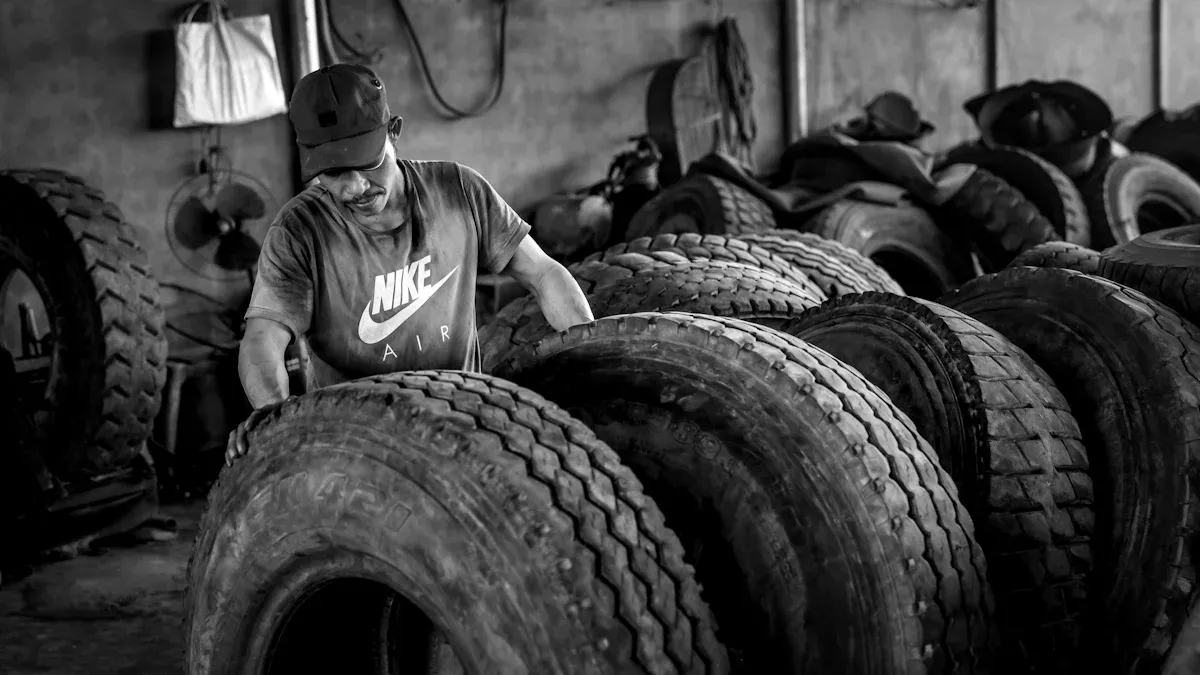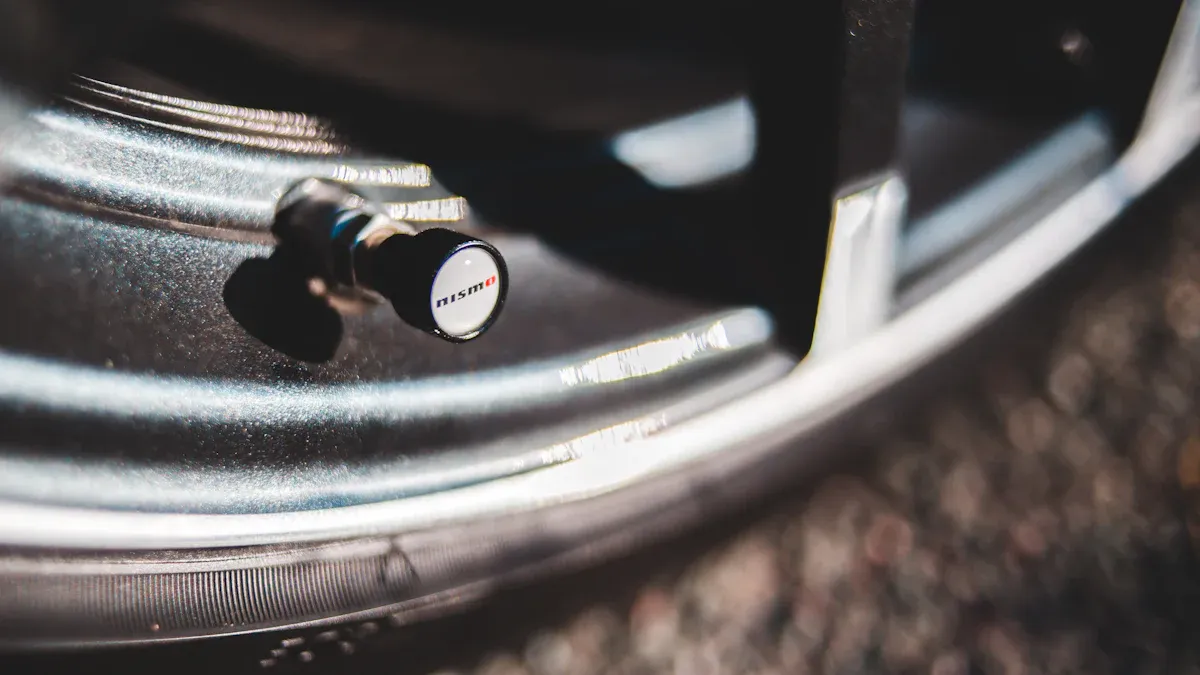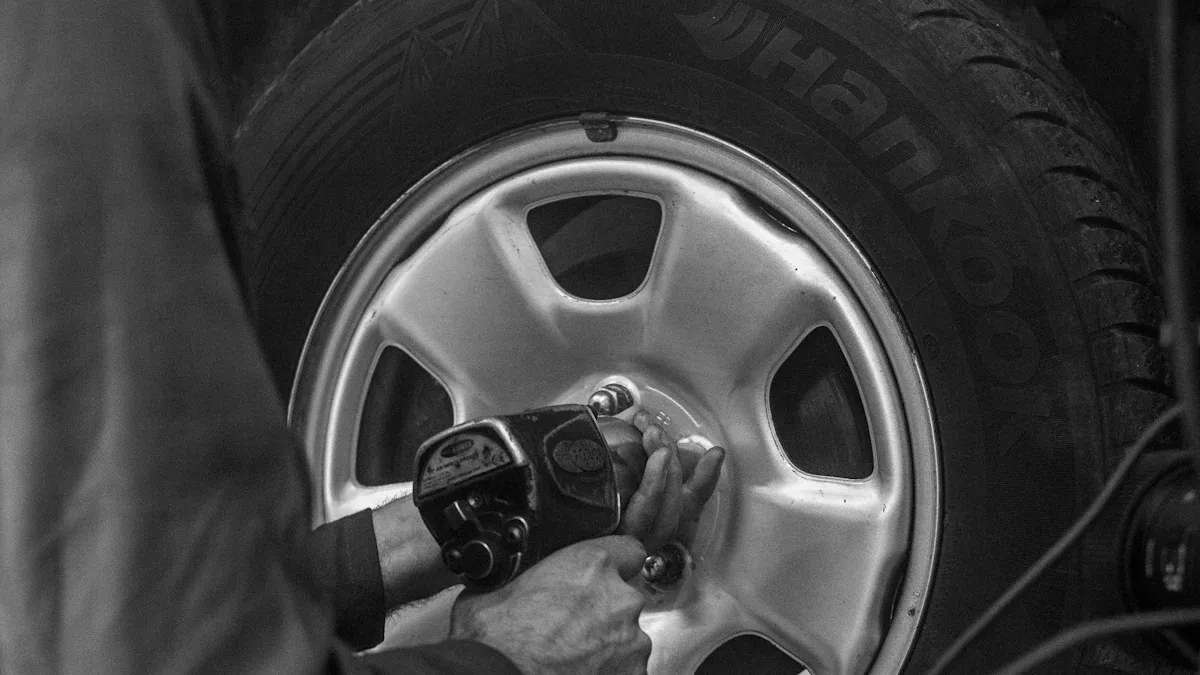

steel clip-on wheel weights
home > steel clip-on wheel weights
reg

| sizes | pcs/box | box/case |
|---|---|---|
| 0.25-1.00 oz | 25 | 20 |
| 1.25-2.00 oz | 25 | 10 |
| 2.25-3.00 oz | 25 | 5 |
coated and uncoated
application
Fits: Standard-width rim flange thickness passenger car steel wheels with 13”-17” wheel size.
mc
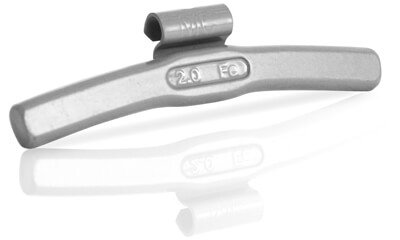
| sizes | pcs/box | box/case |
|---|---|---|
| 0.25-1.00 oz | 25 | 20 |
| 1.25-2.00 oz | 25 | 10 |
| 2.25-3.00 oz | 25 | 5 |
coated and uncoated
application
Application to most North American vehicles equipped with alloy rims.
Many brands like Buick, Chevrolet, Chrysler, Dodge, Ford, Mazda, Oldsmobile, Pontiac & Saturn.
aw

| sizes | pcs/box | box/case |
|---|---|---|
| 0.25-1.00 oz | 25 | 20 |
| 1.25-2.00 oz | 25 | 10 |
| 2.25-3.00 oz | 25 | 5 |
coated and uncoated
application
Application to North American vehicles equipped with alloy rims that were manufactured prior to 1995.
Many brands like Acura, Buick, Chevrolet, Chrysler, Dodge, Infiniti, Isuzu, Lexus, Oldsmobile & Pontiac.
fn

| sizes | pcs/box | box/case |
|---|---|---|
| 5-25 g | 25 | 20 |
| 30-50 g | 25 | 10 |
| 55-60 g | 25 | 5 |
coated and uncoated
application
Application to most Japanese vehicles.
Many brands like Acura, Honda, Infiniti, Lexus, Nissan & Toyota.
iaw

| sizes | pcs/box | box/case |
|---|---|---|
| 5-30 g | 25 | 20 |
| 35-50 g | 25 | 10 |
| 55-60 g | 25 | 5 |
coated and uncoated
application
Application to many new Ford models, on most European vehicles and certain Asian vehicles equipped with alloy wheels.
Many brands like Audi, BMW, Cadillac, Jaguar, Kia, Nissan, Toyota, Volkswagen & Volvo.
t
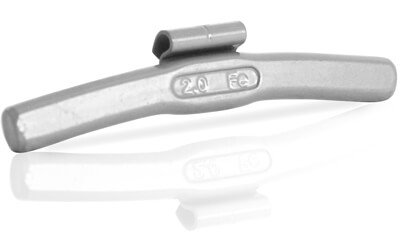
| sizes | pcs/box | box/case |
|---|---|---|
| 0.25-1.00 oz | 25 | 20 |
| 1.25-2.00 oz | 25 | 10 |
| 2.25-3.00 oz | 25 | 5 |
coated and uncoated
application
Application to Most North American light trucks equipped with decorative and larger thickness steel wheels and most light-trucks equipped with alloy wheels.
Steel wheels with a thicker than standard rim flange and light-trucks with non-commercial alloy rims.
EN

| sizes | pcs/box | box/case |
|---|---|---|
| 5-30 g | 25 | 20 |
| 35-50 g | 25 | 10 |
| 55-60 g | 25 | 5 |
coated and uncoated
application
Application to Audi, Mercedes-Benz, Volkswagen and very early-model Japanese vehicles equipped with alloy wheels.
Many brands like Acura, Audi, Ford, Honda, Mercedes-Benz & Volkswagen.
LH

| sizes | pcs/box | box/case |
|---|---|---|
| 0.25-1.00 oz | 25 | 20 |
| 1.25-2.00 oz | 25 | 10 |
| 2.25-3.00 oz | 25 | 5 |
coated and uncoated
application
Application to Chrysler vehicles and is designed to fit their unique alloy rim flange.
All Chrysler models and some Dodge & Ram models prior to 2009.
how to install steel clip on wheel weights
//
select the correct application

Refer to the wheel weight application guide to select the proper wheel weight for the vehicle you are servicing. Verify that the wheel counterweight has been properly installed by testing the position of the wheel counterweight on the wheel rim. The clips on the counterweight block should align seamlessly with the contour of the wheel rim.
//
Confirm The Correct Installation Location

Position the knock-on wheel weight at the correct location of the imbalance. Before striking it with a hammer, ensure that both the top and bottom of the clip are in full contact with the rim flange, while the body of the weight should not be touching the rim. Always use a soft-tip installation hammer to avoid scratching the rim during the installation process.
//
Strike The Weight

Once the wheel weight is properly aligned, use a soft-tip installation hammer to strike the clip area. Only strike the clip area twice to secure the weight. Striking the body of the weight or hitting the clip more than twice could lead to clip retention failure or weight movement. Tapping the wrong location or tapping too many times can easily lead to installation failure.
//
Check The Weight Installation Effect
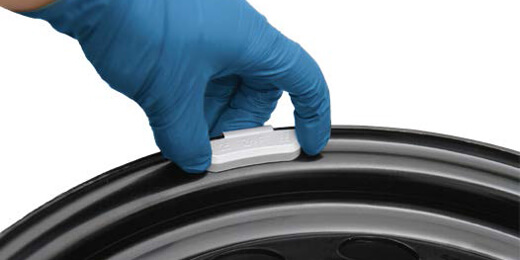
Once you’ve installed the steel clip-on wheel weights, it’s a good idea to check the wheel balance to make sure everything’s in place. Give the wheel on the balancer a few rotations to check that the heavy load point is balanced and there’s no wobble or vibration. If it’s not balanced, add or remove weights until the wheel spins smoothly. When you’re happy with the car, take it for a test drive and keep an eye out for any strange vibrations or handling problems. If all is well, the clip-on weights have been used successfully.
related products

EN Type Lead Clip on Wheel Weights
Application to most Japanese vehicles.Many brands like Audi, Mercedes-Benz, Volkswagen.
how to choose suitable steel clamp-on wheel weights
Wheel imbalance and other issues brought on by uneven tire wear can be resolved with balance weights. Wheel imbalance can impact the vehicle’s handling and safety, increase tire wear, and cause vibration. Proper placement of the wheel weights maintains wheel balancing, improves ride quality, and extends tire life.
Selecting the right clip-on wheel weights is a crucial aspect of vehicle maintenance that should not be overlooked. Zinc, steel, and lead each have advantages and disadvantages; understanding these differences can help you make an informed decision.
Automobile wheel steel clip weights Introduction
Steel clip-on wheel weights are used a lot in the automotive industry. They’re small metal devices that go on the edge of the wheel to keep it balanced. Different sizes fit different wheels. The clip-on design makes it a breeze to install and remove.
Steel is a bit of a middle ground between lead and zinc. Balance weights made from this material are a bit cheaper than zinc. And you can use studded steel weights on roads throughout the European Union. Steel isn’t a hazardous material like lead, so it can be used anywhere.

what are the different types of clip on wheel weights
This type of weight can be made from one of the following materials: zinc, steel, lead, plastic, or steel. People like steel clip-on wheel weights. They are strong and inexpensive. Steel is more environmentally friendly than lead, so it can be recycled. This means that steel clamp wheel weights can be reused at the end of their useful life instead of being thrown into landfills. This helps to conserve natural resources by reducing waste and the need for new raw materials. By choosing steel clip-on wheel weights, you are doing your part to protect the planet.
Why Steel Wheel Weights Are A Better Option?
Higher Durability and Strength
Steel cassette wheel weights are well-known for being stronger and more durable than other materials. Steel is strong, making it perfect for driving every day. It can resist shocks and vibrations, so the weights stay solid and don't deform or break. This makes it perfect for vehicles driving on rough terrain and in extreme weather.
Availability
Steel is a common material that can be easily obtained from suppliers, ensuring that you can easily find the right size and type for your vehicle. This convenience not only saves time but also keeps your vehicle in tip-top shape by allowing for quick replacement when necessary.
Easy Installation and Removal
Steel is stronger and more durable than other materials. Steel is strong and perfect for daily driving. It resists shock and vibration, so clip-on wheel weights for steel wheels stay strong and won't warp or break. As a result, it is perfect for vehicles that are driven over rough terrain and in extreme weather.
Factors to Consider When Selecting Clip-On Wheel Weights
Well-balanced wheels not only improve safety and driving comfort but also extend tire life. When choosing the right Fe clip-on wheel weights for your vehicle, keep these key factors in mind:
Passenger cars require smaller, more precise balancing blocks because they have standard steel or alloy wheels. In contrast, heavy vehicles such as trucks and buses require larger, more robust clamp-on balancing blocks due to the larger size of their wheels. Motorcycles have smaller-diameter wheels and therefore only require lighter, more compact blocks. In short, the type of counterbalance block required is determined by the size and material of a vehicle’s wheels and its weight.
Weight
Something to think about when choosing steel clip-on wheel weights is that the weight you choose should match how uneven your wheels are. Fortune’s clip-on steel wheel weights weigh between 0.25 and 3 ounces each, in 0.25-ounce increments. You can attach these weights to pretty much any type of wheel for any wheel balancing job you can think of.
Refer to your vehicle’s service manual or consult a professional to determine the right ballast weight for your vehicle. If the ballast weight is too light, it will not correct the imbalance; if it is too heavy, it will cause excessive wear to the tires and suspension components.
If you’re unsure of the correct weight for your vehicle, it’s best to consult the professionals at Fortune. We can assess your wheels and recommend sourcing the right weight based on their experience and expertise.
Sizes
When picking a size, it’s really important to measure the rim width accurately. Most rim weights are designed for a specific rim width, so make sure you pick a weight that’s the right size for your rim. Using the wrong size can lead to improper installation, and it may become unbalanced or even loose during use.
Fortune’s steel clip-on wheel weights are available for loads of brands, like Ford, GM, Chrysler, Dodge, Jeep, Ram, Hyundai, and Mazda. If you need more info, just give us a shout and we’ll send you a copy of our Fortune Wheel Weights catalogue.
Compatibility with different types of wheels
And of course, these wheel weights are 100% lead-free and eco-friendly. They’re also really durable, and they fit wheels of all sizes.
They’re mostly used for steel wheels. They’re designed for ease of use and maximum efficiency, and they clamp securely to the rim to make sure they’re stable and balanced. When it comes to aluminum or alloy wheels, it’s best to stick with the stick-on counterweights to avoid any damage to the wheel surface, scratching the delicate rim.
Finding a quality product
Just clip on and go! These Fortune steel clip-on weights make wheel maintenance a breeze. Most weights are slightly heavier than our stick-on wheel weights, so you don’t need to use a lot of steel weights to get the job done. If you want to save time and effort, just clip the weights into place. No mess, no fuss. Your workshop looks better already.
- This is used to balance steel wheels of all kinds on cars, SUVs, vans, full-size pickups, and light trucks.
- Lead wheel weights provide a smooth ride and a safe system for your tires. They are guaranteed to be of high quality and meet U.S. standards.
- Wheels with powder-coated surfaces are excellent at preventing rust and discoloration.
- You can be certain that it will adhere quickly because of its sturdy adhesive backing.
- You can make it extremely tight because it’s simple to clamp.
- The environmental impact of lead-free steel construction is reduced.
- The national environmental laws and health and safety regulations comply.
- They are identical to the original weight in terms of fit, functionality, and appearance.
- It is easy to match OEM wheel shapes thanks to its narrow profile contours.
- It is a fantastic addition to any wheel because of its low profile and easy mounting.
- Accessing the calipers or brake assemblies is made simple by their low-profile design.
- By eliminating conventional wheel weight and optimizing your floor space, you will lower your inventory costs.
clip-on vs adhesive wheel weight
The choice between clip-on or steel adhesive wheel weights depends largely on your wheel type and personal preference. Clip-on blocks are quick to install and adjust, while adhesive blocks have a cleaner look and are more compatible.
Wheel weights are attached to the outer edge of the rim. Metal clips hold them in place. They’re a breeze to use, and you can whip them in and out during tire balancing in a jiffy. But they’re not suitable for all wheels, like polished or painted ones, as they might scratch the surface.
Adhesive wheel weights stick to the inside of the rim. This design is more discreet, as the counterweights are hidden. You can get it in all sorts of sizes and thicknesses. It works well with a wider range of wheel designs, even the more complex ones. It might take a bit more effort to install, and the surface needs to be clean and dry for the adhesive to stick properly.
Why choose Fortune for steel clip-on wheel weights?
Choose Fortune as your manufacturer of steel clip-on wheel weights, and you’re choosing top-notch quality and a service that cares. We’re always looking for new ways to improve and grow so we can offer our customers wheel balancing solutions that are safer, more comfortable, and more efficient. Whether you’re a car manufacturer, a repair shop, or just an individual car owner, Fortune is the ideal choice.
- We’re proud of our high-quality standards. All our products are ISO 9001 certified, so you can be sure they’ll meet the highest industry standards.
- Here’s the lowdown on the advanced technology: We use advanced technology like corrosion-resistant treatment, eco-friendly coating, and intelligent clamping systems to make our products better.
- Diversified design: We can provide a wide range of specifications and customization to meet different customers’ needs.
- Easy to install: It’s a simple design, and it’s easy to install, so you can be sure it’ll balance things out well.
- It’s got loads of different uses: It’s great for all kinds of vehicles and uses, so it’ll suit your needs for sure.
FAQ

Can you reuse a clamp-on wheel weight ?
You can reuse steel clip-on wheel weight, as long as they’re in good condition. Just make sure they’re not damaged, corroded, or excessively worn. They’re great for replacing tires or moving weights. But if they’ve been used in tough conditions or have lost their stickiness, it’s best to replace them. You also need to think about the wheel types to make sure you use the right weights and avoid any imbalances. If you’re not sure, the pros at Fortune are the best people to talk to.
Can you use clip-on weights on all wheels?
Steel clip-on weights are an effective tool for ensuring tire balance on standard steel and aluminum wheels, mounted on the outside edge of the rim. However, in the case of polished, painted, or uniquely designed wheels, it can lead to surface damage or insecure mounting, in which case, stick-on weights should be used, which can be attached to the inside of the wheel without detracting from its appearance.
They are not suitable for lightweight wheels, and the extra weight may affect their performance.
Do wheel weights have to be kept outside?
Internal adhesive wheel weights are usually preferred for aesthetic reasons, and they give the wheels a neat, smooth appearance. They also help to protect the wheel from road debris and potential damage.
The location of wheel weight is usually determined by a number of factors, including wheel type, vehicle design, and preference. Choosing to place clip-on wheel weights on the outside may be a convenient way to make future adjustments.

